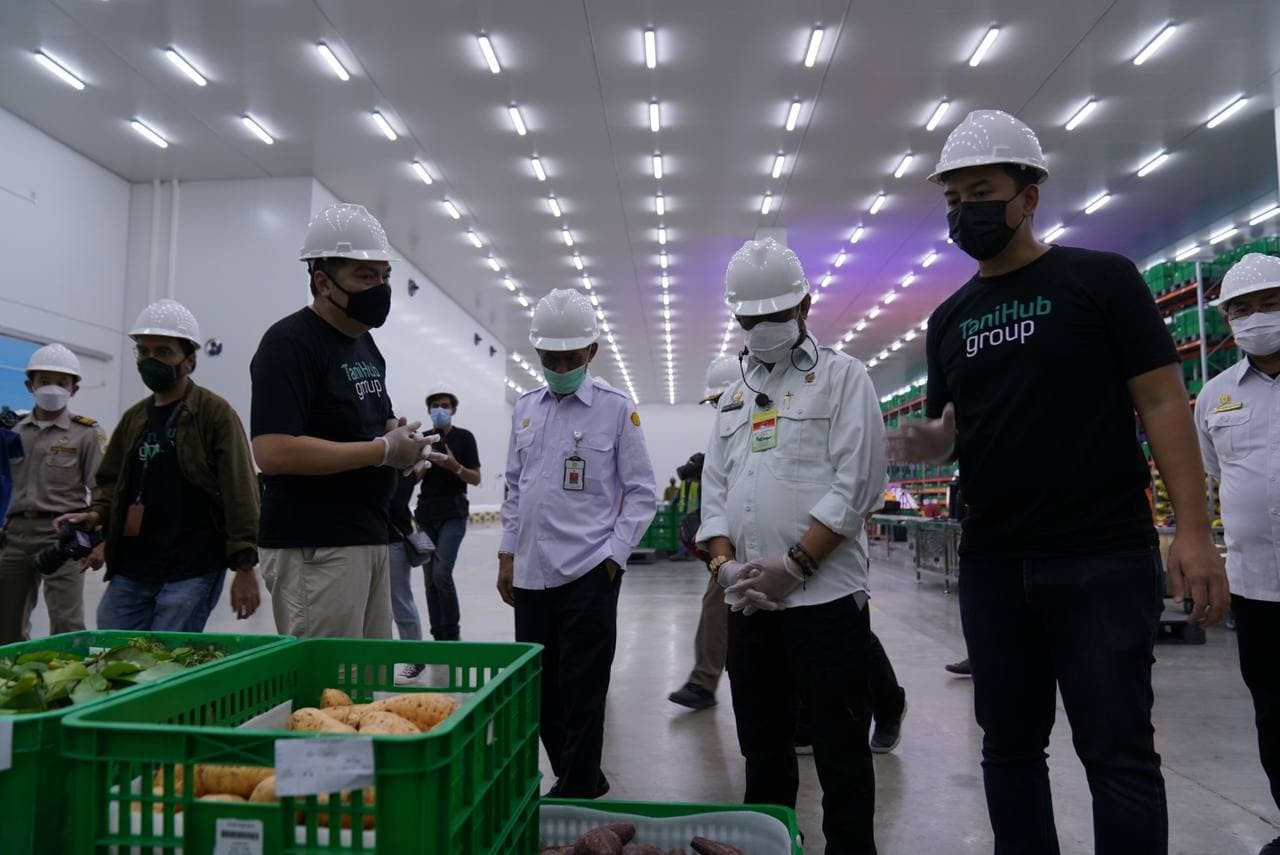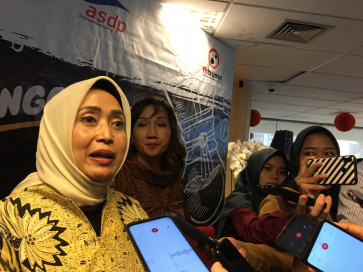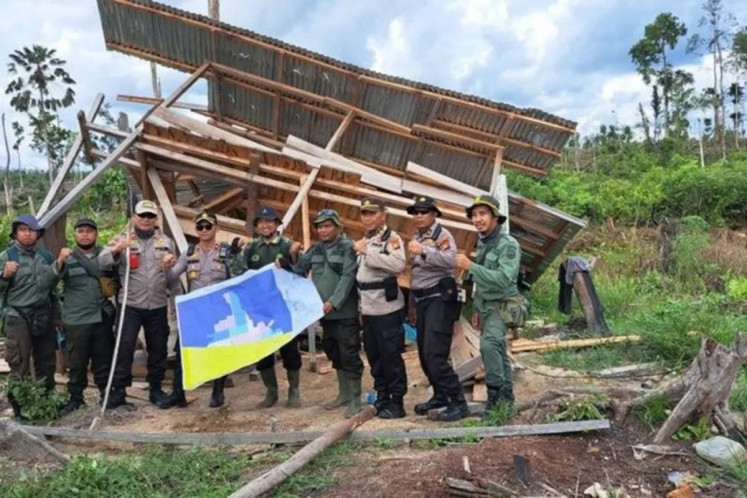Popular Reads
Top Results
Can't find what you're looking for?
View all search resultsPopular Reads
Top Results
Can't find what you're looking for?
View all search resultsDigital technology brings prosperity to rural areas
Digital technology cuts out the "middleman economy" by connecting agricultural production directly to consumers.
Change text size
Gift Premium Articles
to Anyone
D
espite the devastating impact of COVID-19, the telecommunications and agriculture sectors have continued to expand. The growth of telecommunications-related industries that deal with information technology has even skyrocketed.
The pandemic has forced humans to interact without physical proximity. Almost all economic and social activities instantly turned digital.
The prophecy of futurist Alvin Toffler from the 1980s came true. Toffler predicted a roaring wave of change due to an information technology revolution triggering a future shock (the third wave). Through affordable smartphones and internet connections, the world is now in our hands. Whether rich or poor, big or small, everyone will bow equally in front of information technology.
The amount of information that used to take 50 years to be obtained, can now be accessed in less than a year. The power of a lecturer or teacher suddenly collapses in front of students who have access to the internet. Old-fashioned academic textbook thinking can't fight today's tough online learners. It is called "the death of expertise".
The digital economy has broken the conventional economic structure and its grip on society. Digital technology has disrupted the business of giant malls and supermarkets, hotels, banking, television and transportation, which are worth trillions. With no other choice, business giants are forced to carry out digital transformations faster.
Without the hassle of renting a kiosk or shop or of paying for electricity, maintenance or many employees, just create a stall on a marketplace platform or create a blog, then take advantage of free social media promotions. Everything can be sold all over the world. In Indonesia, the digital economy in 2020 was worth more than Rp 600 trillion (US$7 billion) and is expected to at least triple by 2025.
There are future surprises, according to Toffler. The first wave is the period of agricultural revolution. Then the second wave begins, which is the period of industrial revolution. Toffler said there was no need to faithfully copy the second wave, which had forced millions of people out of villages and into industrialized mass production, experiencing culture shock and damaging the environment, to enter the third wave. And apparently, this phenomenon can be seen from agricultural statistics, which continue to progress even though most other sectors have experienced negative growth during the pandemic.
If previously the phenomenon of urbanization was known, now “ruralization” has also emerged. Urbanization in this context is defined as the movement of people from villages to cities to get a better life. On the other hand, ruralization is the return of population from cities to villages. Through information technology, this is made possible.
Digital technology cuts out the "middleman economy" by connecting agricultural production directly to consumers. Producers get higher prices that were previously enjoyed by middlemen through long distribution chains, while consumers get lower prices and fresher products. It is amazing that we are seeing the exponential growth of digital platforms like TaniHub, SayurBox, KedaiSayur, TukangSayur, etc, which facilitate relationships between agricultural producers and consumers.
An extraordinary rural phenomenon has occurred in China because of Alibaba's digital platform. Raw materials are available in the village, where labor costs are lower, production is cheaper and living costs are more manageable. Of course this is an attractive option. If you don't have to be a victim of traffic jams, air pollution and you can live decently in a village, why go to the city?
The digital village materialized in China when the internet was widely available to the rural population. This has helped many people from rural areas start selling products online and earn income. This trend has led to the proliferation of many online services, including a digital e-commerce platform in Taobao village. Taobao village generates 10 million yuan (US$1.57 million) or more per year from e-commerce sales and has 100 or more active online shops operated by local residents. It is a place to sell agricultural and plantation products, handicrafts and other products online.
After 10 years, in August 2019, there were a total of 4,310 so-called Taobao villages, where 250 million of China's 564 million villagers lived. Taobao villages leverage e-commerce to promote more inclusive economic growth in rural China. The immediate result of the Taobao village boom was improved economic conditions and job creation in the poorest areas of China.
A World Bank and AliResearch study showed that household incomes in Taobao villages were nearly three times the average income of rural households in China, leading to higher household consumption, reduced income inequality and better job opportunities for women and young people. Indonesia needs to learn from China's experience.
Digital platforms definitely play a key role, but logistics and transportation are also important. Without efficient, fast and affordable logistics and transportation, village e-commerce will be difficult to develop. Apart from infrastructure issues, the challenge to create efficient and inexpensive logistics and transportation is economies of scale.
The delivery costs could be expensive if we don't send goods in large quantities or without a system. In this case, as villages now have Village-Owned Enterprises (BUMDs), which can be used to increase the scale of economy through increasing the scale of production or cooperation of producers, so that village products can be sent at lower cost because they reach economies of scale.
This is an alternate path for building prosperity, through ruralization.
***
The writer is a nexus strategist at Perkumpulan Prakarsa, a nonprofit organization focusing on the dissemination of innovative ideas for prosperity.










